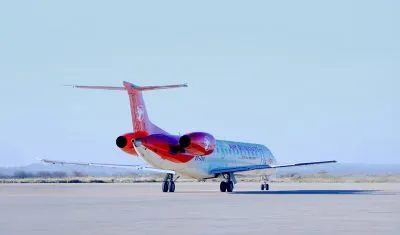Kenya, Rwanda and Uganda, which with Tanzania and Burundi form the five-nation East African Community (EAC), appear to have formed a clique within the organisation and are forging ahead with several integration projects from which Tanzania and Burundi have been excluded.
Projects range from a single tourist visa for the three countries, free movement of people and goods to multibillion-dollar infrastructure programmes. Will the community stay together? Wanjohi Kabukuru reports.
Three members of the East African Community, which is made up of Tanzania, Kenya, Rwanda, Burundi and Uganda, are in a hurry to achieve economic integration. In the second half of 2013, the trio of Uganda, Rwanda and Kenya intensified their quest for easier business among the member states by overseeing multibillion infrastructure projects.
From 1th January this year, tourists need only one visa, costing $100 to visit Uganda, Rwanda and Kenya, three members states of the East African Community (EAC). Previously, tourists needed separate visas for each of the three countries at a cost of $150. Tanzania and Burundi, also member states of the EAC, are not party to this arrangement and visitors still require separate visas to visit these two countries.
In addition, since 2011, citizens of Rwanda and Kenya could cross each other’s borders using only their identification cards rather than travel documents. Uganda has now joined in as well even though it has not yet issued identity cards to its own citizens – instead Uganda’s can cross into either of the two countries using their voter’s cards. Citizens of the three countries are fee to seek employment in each other’s territories.
These developments, in addition to several other initiatives taken by the three states, have thoroughly put Tanzania’s and Burundi’s noses out of joint. Tanzania in particular believes it is being sidelined. This ‘cold shoulder’ infuriated parliamentarians in Tanzania to such an extent that there were strident calls to pull out of the community and form a rival regional organisation with Burundi and the Democratic Republic of the Congo (DRC). Tanzania’s President Jakaya Kikwete, however, called for calm and reiterated the country’s determination to remain part of the community.
But while Tanzania and Burundi fume, the other three partner states seem to be moving along at a smart clip to integrate their economies and work on major infrastructure projects. Last June, the heads of state of the three countries met in Entebbe, Uganda, as the ‘Coalition of the Willing’ to discuss ways in which they could cooperate on the economic front. They said that efforts towards greater regional integration had been moving too slowly and they wanted to inject greater pace and energy into it. Tanzania and Burundi were not invited.
There had been accusations that both these countries had been dragging their feet over regional projects and the trio had finally lost patience. At the Entebbe meeting, each of the partner states undertook to focus on one aspect of the integration process: Rwanda was to work on the single tourist visa, single customs territory and EAC e-Identity cards system; Kenya was to focus on electricity generation and the establishment and expansion of oil pipelines; while Uganda agreed to spearhead political federation and railway infrastructure. A second meeting followed in early August 2013, when Presidents Paul Kagame, Uhuru Kenyatta and Yoweri Museveni of Rwanda, Kenya and Uganda respectively inaugurated the new Berth 19 at Mombasa Port, the first port expansion project in 20 years.
Built by China Road and Bridge Corporation (CRBC), Berth 19 will increase the capacity of the port and boost container handling by 30%, meaning an additional 200,000 TEUs annually. Before the inauguration of the $64.8m Berth 19, Mombasa port handled 600,000 TEUs annually.
The expansion of the port of Mombasa had been accelerated following strong pressure from Uganda and Rwanda, both of which depend on the port for their imports and exports. Kenya has also been asked to remove bottlenecks along the Northern Corridor, which serves the two countries as well as South Sudan, Burundi and Eastern DRC. Regional trade volumes had overstretched Mombasa port, leading to a serious congestion problem at the port. Another associated transport headache has been the dismal state of the railway network, which has led to most goods destined to and from the landlocked countries being trucked and in the process wreaking havoc on the roads.
The good news is that after over a century, during which Kenya and Uganda were stuck with the colonial-era British-built Kenya-Uganda railway, which is now thoroughly dilapidated, work will start on a brand-new $13.8bn railway funded by the Chinese this year. The railway will connect Mombasa to Nairobi and onwards to Uganda, Rwanda and South Sudan. China’s CRBC is constructing the first section of the line to Nairobi covering some 450km. Including branch lines to Nanyuki and Kisumu), this is expected to be completed in three years. So far the high-speed standard-gauge railway is the largest infrastructure project in Kenya for 2014.
Want to continue reading? Subscribe today.
You've read all your free articles for this month! Subscribe now to enjoy full access to our content.
Digital Monthly
£8.00 / month
Receive full unlimited access to our articles, opinions, podcasts and more.
Digital Yearly
£70.00 / year
Our best value offer - save £26 and gain access to all of our digital content for an entire year!
 Sign in with Google
Sign in with Google 


